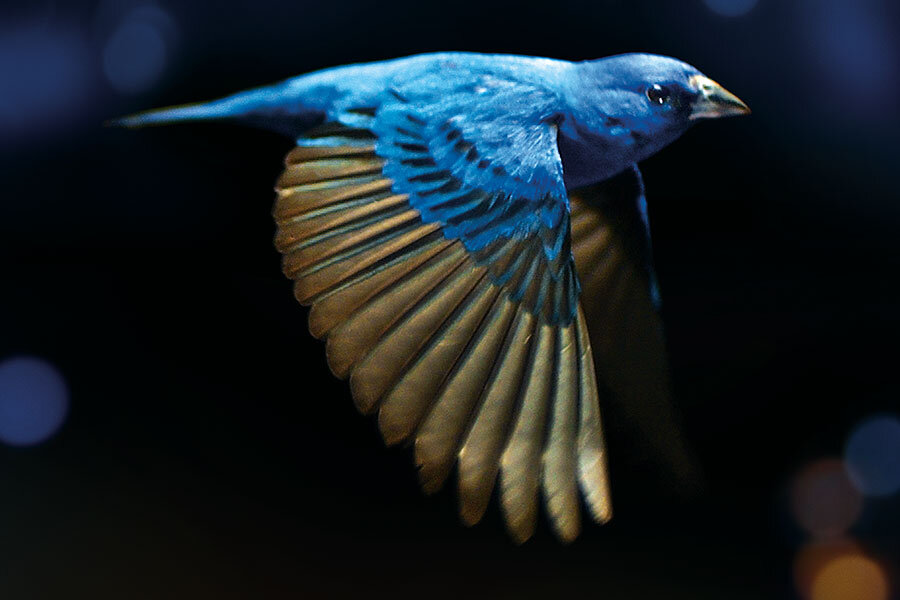'The Messenger': Its worthy ecocentric message can't hold a candle to the film's beauty
Many of us were transported watching the 2001 documentary “Winged Migration,” which filmed big birds in flight as if we were soaring right alongside them.
For the most part, “The Messenger” does for songbirds what “Winged Migration” did for big birds. It’s a much more pointedly ecocentric movie, but then again, climate science has come a long way in the past decade. One of the main rallying points of “The Messenger” is that birds have “something to tell us” about the environment’s mounting ecological hazards. The canary in a coal mine phenomenon, according to this film, has assumed global proportions.
Director Su Rynard and her chief cinematographer, Daniel Grant, do such a good job of showcasing the songbirds, up close and in super-slow motion, that they almost undercut their own agenda. They want to make a movie that, while beautiful to look at, is essentially a call to political action. They want to make the world safer for songbirds. But the polemic side of this film, worthy though it is, can’t hold a candle to those slo-mo songbirds, those dazzling goldfinches and sparrows and warblers. The cinematography goes way beyond mere ornithological documentation. It’s as if we are seeing these birds for the first time, and in a sense, we are.
Rynard and Grant utilized a Phantom high-speed camera, which allowed them to record frame rates of up to 1,000 frames per second: In other words, one second recorded will be stretched out to about 40 seconds of slow motion. But filming big birds in flight is one thing; filming tiny birds, which often fly at night, high in the sky, is something else again. Rynard and Grant were able to capture these images by first capturing the birds (for which they had to obtain permits) and then placing them in a wind tunnel specially designed to simulate the altitudinal conditions of nocturnal migration. (The tunnel was located at the Advanced Facility for Avian Research at Western University, near Toronto.)
An added filming difficulty is that birds, especially small birds, are disturbed by bright lights. So how do you shoot these specimens in the dark? The painstaking solution was to film with light sources so targeted that often only one inch of the image was in focus at a time.
The complex interaction of birds and light is demonstrated in “The Messenger” by the careful preparations that were undertaken by bird activists at a 9/11 memorial in New York, where a nighttime light sculpture was turned off so as not to confuse birds at the height of the migration season.
In Toronto, activists greatly reduced the number of collision deaths by having markers placed on buildings with mirrored or clear-glass exteriors. (Birds can’t easily differentiate between a clear surface and open air.)
The film’s larger point is that the modern world, with all its ecocatastrophes, is simply not good for birds – or, by extension, humans. Pesticides, deforestation, hydraulic fracturing, air and noise pollution – all these have wreaked havoc on small birds, fragile creatures that can’t adapt readily to such wrenching changes in their habitat. Some 20 billion songbirds migrate each year, but only half survive.
Some of them are eaten not just by predators but by people. The tiny ortolan bunting is currently at the center of a fight between hunters and preservationists. Although it’s been illegal since 1999 to capture these birds, we see hearty hunters stewing and then devouring them in a single gulp (ugh). The most shocking statistic in the film involves cats, sneeringly referred to in the film as “not natural components of the environment.” Cat lovers might not be surprised to hear that felines annually consume 1.4 billion – that’s billion – songbirds. (How, I wonder, was that statistic arrived at?)
“The Messenger” is the antithesis of Alfred Hitchcock’s “The Birds.” Mess with the birds, it says, and you will destroy not only them but yourselves.
A cautionary tale is provided: In the late 1950s, Mao Zedong declared war on tree sparrows and just about succeeded in wiping them out. The only problem is that the insects that flourished after the birds’ demise ended up ruining the grain crops. The result was a famine in which 30 million people died. Grade: B+ (Unrated.)






